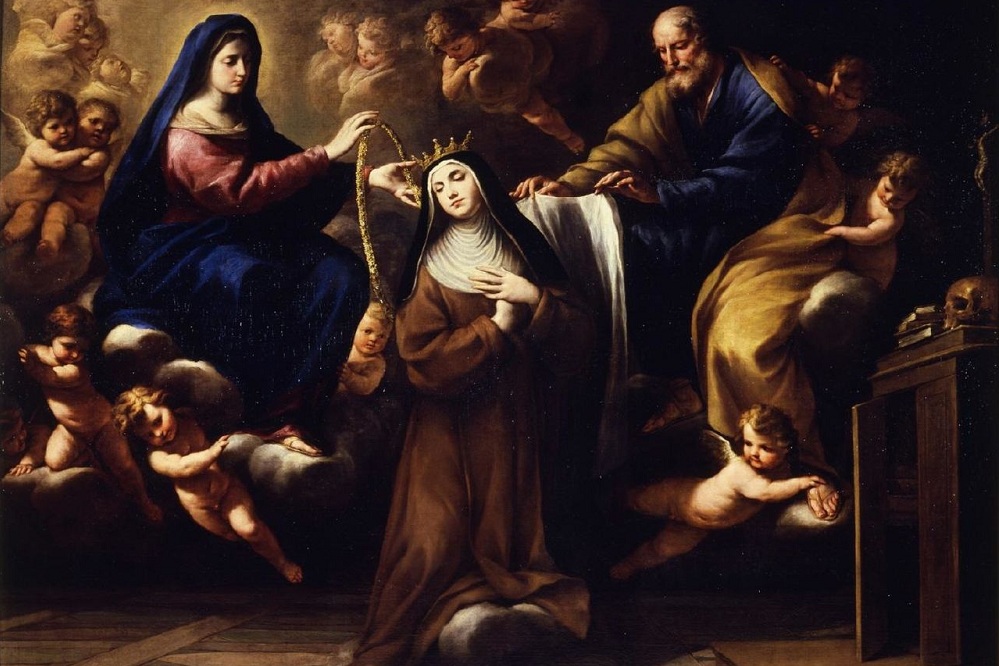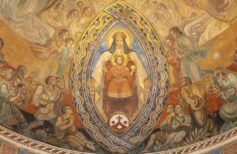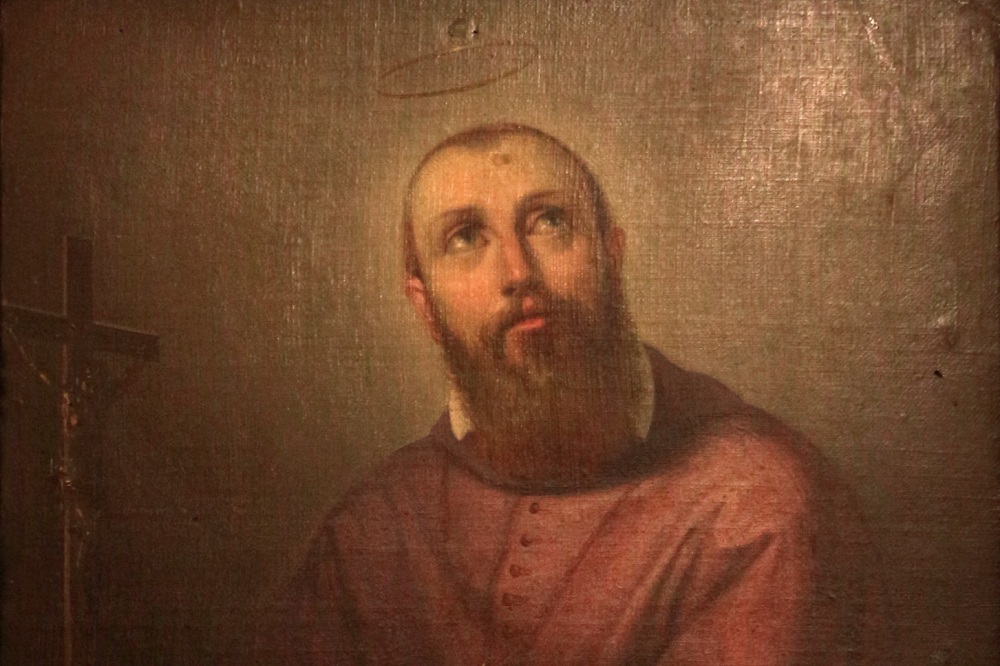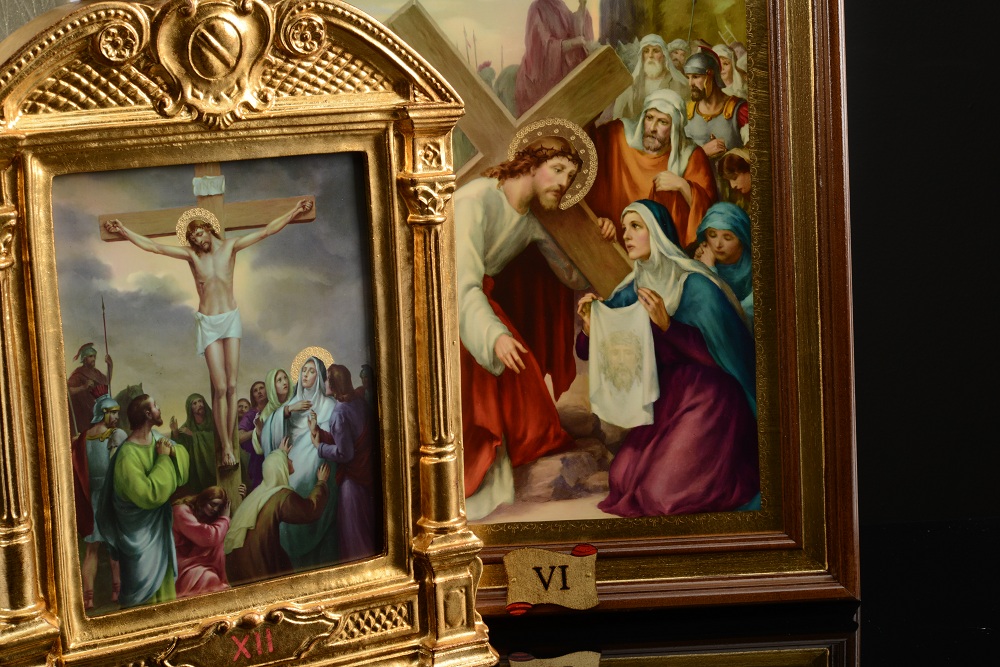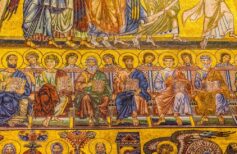Contents
Saint Teresa of Avila was a Spanish nun and mystic. One of the few women declared a Doctor of the Church, she reformed the Carmelite order and proposed a model of faith based on the friendship between man and God and on a deeply human dimension of Jesus Christ. Why do we venerate her?
The cult of the saints has very deep roots.
In every age and civilization there have been displays of celebrations and devotion for famous and ‘special’ men and women, who stood out in their lives for actions, works and thoughts. It would be reductive to consider the cult of the saints a derivation of such idealization of exceptional deaths.
In the new Christian world, risen from the ashes of the Roman Empire, still dangerously influenced by pagan rituals and millenary beliefs, the cult of the saints is at the beginning a heritage of old traditions. The devotion towards saints and martyrs comes from a condition of instability and turmoil due to the deep social, psychological and even urbanistic changes.
The cult of the saints is born and grows simultaneously to the inner and outer changes experienced by the Church since its origins. Bishops officialized and encouraged it since the beginning, but we must not think of it as a form of popular religiousness, limited to the ignorant small people, still upset by pagan legends and stories, nor as a way to convert ignorant masses more easily. We must not think that this religious display, born in cemeteries and at the tombs of the blessed, involved only women and poor people, the forever ‘weak’ ones, excluded from the ‘high’ religion. It is not like that. On the contrary, the cult of the saints involved all social classes since the beginning, eliminating the barriers between rich and poor, between men and women.

On one side, it is true that the will to invoke invisible protectors can be tied to ancient pagan beliefs. On the other side though, it is the first time that believers do not turn to supernatural beings, but to deceased people, who lived and acted in a historical context that is not too far from theirs.
The Latin word ‘sanctus’, past participle of sancīre, meant something inviolable. And that is what a Saint is, a human being tied to the divinity, and as such, worthy of veneration and respect. At the same time, they are protectors, someone to turn our prayers to, so that, strong with their sanctity, they can work as an intermediary between us and God.
Holyart always hosted many in-depth articles about the cult of the saints in its blog. To name a few: Saints that changed the world, or more specific ones Saint Augustine of Ippona: philosopher, bishop and theologian, Saint Agnes: story of a virgin and a martyr, or even Padre Pio and the Order of the Capuchin Friars Minor.
Today we talk about Saint Teresa of Avila, Spanish nun and mystic.
Who was Saint Teresa of Avila, or, as she is sometimes also known as, of Jesus?
Her real name was Teresa Sánchez de Cepeda Dávila y Ahumada, born on March 28th 1515 in Avila, Spain. There in Avila, she entered the Carmelite Convent of the Incarnation at the age of 20, taking the name of Teresa of Jesus. Her youth was marred by a serious disease, which forced her to bed for a long time. For four days, she was even in a coma, as dead. But that didn’t prevent her from living a full religious life, and to become one of the most important figures of the Catholic Reformation. Since she was young, she actively participated in the reformation of the Carmelite order, and in 1562, she founded the first Reformed Carmelite convent in Avila, followed by 16 more in the whole country.
Saint Teresa wrote many texts collecting the points of her mystic-spiritual doctrine.
First point, the evangelic virtues as basement of the whole Christian and human life. Such vision included the need to detach from earthly goods to embrace poverty, but also love of neighbor, humility, determination and theological hope.
But Saint Teresa also preached the need for a deep harmony with the great Biblical characters and for some sort of needed friendship between man and God. In her ‘Life’, talking about prayer, she wrote: ‘Mental prayer is a friendly intercourse, with him who we know loves us‘ (Life, 8:5).
Moreover, she deepened the subject of Christ’s humanity, lingering on the fact that Christian life should be a personal relationship with Jesus, based on love and imitation, with the final aim of uniting with Him. To get there, the Saint preached the need for meditation about the Passion and the Eucharist. All her human and religious life was reaching out towards this perfection of love, this fullness of and within Christ. In her most famous work, the ‘Interior Castle’, path of the soul looking for God, describes such fullness realizing in the union with Christ through the mystery of his humanity.
We like to think of Saint Teresa of Avila also for her deep modernity. On February 2 2011, during the General Audience on Wednesday, Pope Benedict XVI said about her: ‘In our society, which all too often lacks spiritual values, St Teresa teaches us to be unflagging witnesses of God, of his presence and of his action. She teaches us truly to feel this thirst for God that exists in the depths of our hearts, this desire to see God, to seek God, to be in conversation with him and to be his friends. This is the friendship we all need that we must seek anew, day after day. May the example of this Saint, profoundly contemplative and effectively active, spur us too every day to dedicate the right time to prayer, to this openness to God, to this journey, in order to seek God, to see him, to discover his friendship and so to find true life; indeed many of us should truly say: “I am not alive, I am not truly alive because I do not live the essence of my life”. Therefore, time devoted to prayer is not time wasted, it is time in which the path of life unfolds, the path unfolds to learning from God an ardent love for him, for his Church, and practical charity for our brothers and sisters‘.
When is Saint Teresa celebrated
Saint Teresa was declared blessed in 1614, and then saint by Pope Gregory XV in 1622. Paul VI in 1970 included her among the Doctors of the Church, along with Catherine of Siena. She is celebrated on October 15th, the day of her death. It is said that her last word were: ‘O my Lord and my Spouse, the hour that I have longed for has come. It is time to meet one another.‘
The ecstasy of Saint Teresa
The ecstasy of Saint Teresa, also known as Transverberation of Saint Teresa, is a marble and bronze sculptural group made between 1647 and 1652 by Gian Lorenzo Bernini. It is set in the Cornaro Chapel, Santa Maria della Vittoria, Rome.
The statue depicts the Holy Mother with her head reclined, clothes are disordered, her eyes are closed and her mouth is slightly open; she is pierced by a beautiful angel with a flaming spear. In her writings, Teresa described this episode, specifying that it was actually the spear held by the angel that reawakened her love for God. It is a typical example of a mystic ecstasy representation, one of the recurrent themes in baroque art.
The statue expresses mysticism but also sensuality, as if the intensity of the religious feeling would invade her so much that she felt some sort of overwhelming passion, involving both mind and body.
The prayer to Saint Teresa of Avila
Among other things, Saint Teresa of Avila also composed a beautiful prayer dedicated to the regret that we all feel sometimes of having wasted our time instead of using it to do something good. A very human and current feeling, to which the Saint gave her personal and sensitive interpretation.
God, in his endless benevolence, transforms even that lost time in something good, in a ‘benefit’. A consolation that is also a spur to do better in the future.

Here is the prayer.
O my God! Source of all mercy!
I acknowledge Your sovereign power.
While recalling the wasted years that are past,
i believe that You, Lord,
can in an instant turn this loss to gain.
Miserable as I am,
yet I firmly believe that You can do all things.
Please restore to me the time lost,
giving me Your grace, both now and in the future,
that I may appear before You in wedding garments
because, if You want it, You can do it.
Amen.
Saint Teresa on Holyart
In our online store, you will find many articles dedicated to Saint Teresa of Avila: statues, rosaries, prayer cards and many more. Take the Statue of Saint Teresa of Avila with crown of natural thorns made of maple wood from Val Gardena into your home. It is carved in Italy in a company in Val Gardena; thanks to their skills in carving woods, they create works that are amazingly beautiful in both shape and kind. The statue is very detailed and refined to the detail, as you can see from the face details, the clothes and the hands.
It is a product of high prestige and quality. Very appreciated, the oval Medal of S. Teresa Avila in silver-plated metal, 1.5 cm tall, containing the portrait of the Saint. Suitable for any occasion, the Prayer Card of Saint Teresa of Avila, original prayer card from the company Fratelli Bonella. The image, printed on cardboard and decorated with golden motifs depicting Saint Teresa of Avila, has the novena dedicated to Her on the back side.

